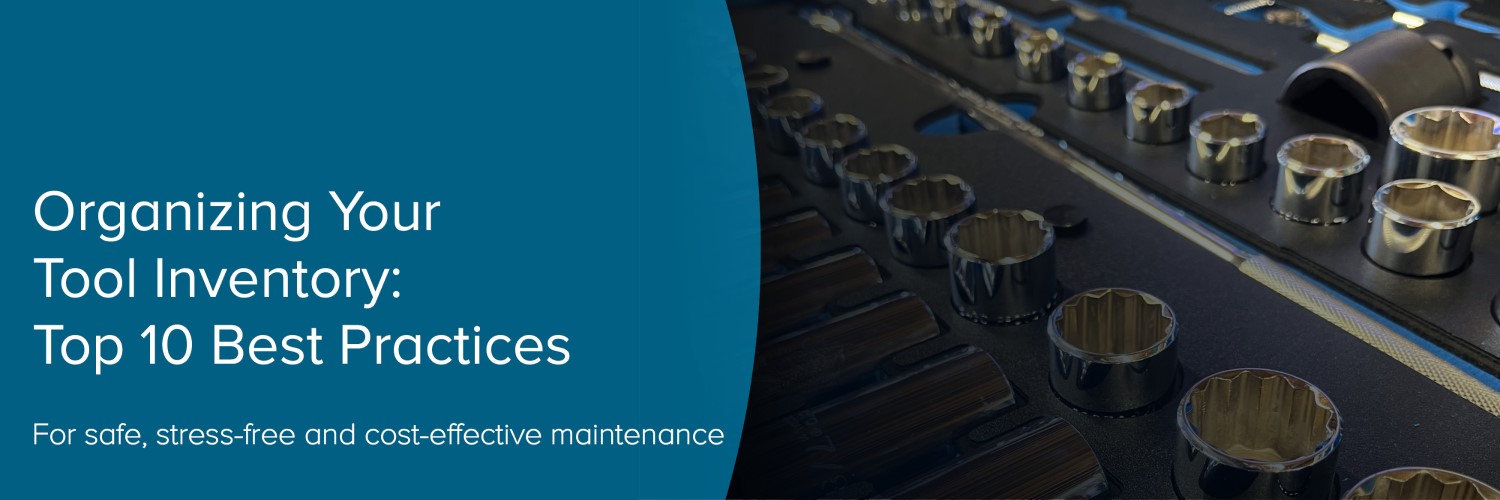|
Henchman |

|
|---|
Organizing Your Tool Inventory: Top 10 Best Practices
Apr 9, 2024

Organizing Your Tool Inventory: Top 10 Best Practices
Managing the extensive array of equipment and tools crucial for daily aviation maintenance operations is a complex task. From specialized avionics to essential ground support equipment, ensuring the availability and proper functioning of assets is paramount in the aviation industry.
Unfortunately, not every aviation organization has a streamlined system in place to manage its inventory effectively. Implementing a well-structured aircraft maintenance inventory management plan can significantly enhance the procurement, tracking, and utilization of aviation tools and equipment, leading to improved overall efficiency.
Why Enhance Your Aviation Tool Inventory Management?
Investing in better inventory management in aviation yields numerous benefits, including heightened day-to-day productivity, enhanced safety measures, and substantial cost savings. A well-managed inventory ensures that critical equipment is readily accessible and in optimal condition, aligning with aviation safety and quality control standards.
With tools ready for use at the beginning of each line or base maintenance shift, your staff can efficiently and safely carry out their tasks. Additionally, effective equipment management allows for the swift identification and rectification of faulty equipment, promoting both safety and operational timelines. The data collected through electronic automated inventory management systems also facilitates more informed decision-making when it comes to future equipment purchases.
Top 10 Aircraft Tool Management Best Practices
While the specific needs of each aviation organization, manufacturing company or MRO provider may vary, there are essential best practices that every entity should incorporate into its tool control strategy. Here are ten aviation-specific, smart, and practical measures to enhance your equipment inventory management:
1. Maintain a Comprehensive Tool Inventory:
Any item with an appreciable impact on business performance in case of its misplacement needs to be tracked – to avoid costly aircraft downtime.
Develop a comprehensive master database to manage all tooling assets within your organization. Include crucial information such as part numbers, calibration or service history, and supplier contact details. This comprehensive approach ensures efficient management, reduces losses, and extends the lifespan of your equipment.
2. Utilize Aviation-Specific Management Technology:
Choose an effective inventory management system tailored to aviation compliance requirements. Some smaller businesses might be able to get away with using a locked cabinet and a logbook to manage their valuable equipment, but most larger businesses won’t.
Aviation organizations may benefit from electronic solutions including sensor and RFID-enabled tool tracking, which automate administrative tasks associated with tool inventory management and enhance traceability.
3. Track and Manage Aircraft Tool Usage:
Beyond secure storage, monitor aircraft tool usage and track wear and tear over time. This data helps identify over- or underutilization, indicating which tools you need to purchase more frequently or hardly at all.
Similar to predictive maintenance for your aircraft, this predictive usage for your tools can identify items that need to be replaced more often, making sure they are reordered before they break.
Tracking tool usage might also identify performance issues – Were the right tools used to carry out the repair? Why is it always the same tool that’s breaking? How many times did your staff have to come back to grab other tools, and how could this be prevented?
4. Optimize Aircraft Equipment Distribution:
Analysing usage data might identify inefficiencies in tool storage locations. Redistribute tools or implement additional point-of-use tool storage to minimize unnecessary trips across the hangar or airport back to your toolcrib – ensuring availability where needed the most, increasing time spend working on the aircraft and preventing redundant purchases.
5. Automate Aviation Tool Procurement:
Manually keeping track of your inventory can be a challenge. Choose a tool management system that includes alerts and automatic notifications for reordering consumables low in stock or replacing tools nearing the end of their recommended usage period. These alerts can be sent to supervisors or directly to your procurement department.
Automation improves control and optimises your purchasing, avoiding downtime waiting for equipment as well as excess storage costs for over-purchased aviation tools that nobody is using.
6. Monitor Aircraft Tool Breakage:
Choose an inventory system that includes functionality for your staff to report a tool as unserviceable easily when returning it. Automated alerts sent to supervisors will speed up the process of scheduling the item in for repair or replacement.
7. Implement Quality Controls for Aviation Tools:
Choose an inventory control system that can prompt users to perform important quality control activities, if required. When signing items in or out, checklists built into access control terminals ensure additional checks are completed, such as verifying a tool is still within calibration – ensuring you meet ISO 9001 quality control standards.
8. Build in Aircraft Tool Maintenance Cycles:
Choose an automated management system that rotates equipment usage, distributing wear and tear evenly across your inventory. By this, you can prevent staff from always picking the same toolkit or the newest piece of equipment, making sure every item is used to the same extent.
By implementing functionality that allows users to either reserve equipment or only allows a certain user group access to certain items, you can make sure specific tools are always available for certain critical jobs or in case of ad-hoc emergency repairs.
9. Prioritize Ongoing Spending for Aviation Tools:
Use your collected usage data to prioritize future spending on aviation tools, fine-tuning the quantity of reserve tools – which items are prone to breaking, which consumables are used up first? Tailor your restocking to meet actual needs, avoiding overspending on seldom-used tools and ensuring a well-equipped aviation toolstore.
10. Invest in High-Quality Aviation Tools:
Apply the insights from these best practices to make informed decisions when purchasing replacement tools. Identify types of tools as well as tool brands that break more frequently, require minimal maintenance, or are preferred by your staff for their reliability and performance.
Sometimes you can decide to buy a cheaper brand, in case you notice that it makes no difference to longevity, or to invest in a premium brand, if it means tools will actually last longer.





